History

Thanks to a panel placed by the Northern Ireland Environment Agency [1] at the entrance of the site, we learned a lot of interesting information about Kilbane castle. For example, that it gets its name “Kinbane” from the white chalk promontory on which it stands (indeed in Irish An Cionn Bán means “white head”). Barely accessible from the land and difficult to approach by sea, the castle was constructed in a naturally ideal defensive position.
A useful introduction to the castle’s history is also given by the same panel [1], which is going to be the main reference in this page, unless otherwise specified. Kinbane castle was built around 1547 by Colla MacDonnell, elder brother of the famous Sorley Boy. Being a branch in Ireland of the powerful Scottish clan of the MacDonald, the MacDonnells erected several castles along the coast of Antrim (other remarkable examples are Dunluce or Dunseverick, that we suggest to visit too on our website).
Towards the end of the 14th century, the MacDonnells inherited lands in Antrim through a marriage alliance with the Bysets, till then Lords of the Glens of Antrim (or simply the Glens). At the beginning of the 16th century, the MacDonnells extended their control to the north-east Antrim coast and then to the western territories, in the area known as the Route (in Irish An Rúta), held by the MacQuillans.
The growing power of the MacDonnells alarmed the Elizabethan governement, which also intended to occupy Ulster. In 1551, the Lord Deputy of Ireland, Sir James Croft, moved to Ireland with a fleet of four ships to fight against the MacDonnells. With that, Kinbane suffered a heavy cannon fire and was consequently severely damaged. However, the power of the MacDonnells continued to grow and Colla MacDonnell was appointed Captain of the Route by 1555. After his death in 1558 (perhaps at Kinbane castle), the role passed to his brother Sorley Boy.
Kinbane castle was then handed to the MacAlister family for their loyalty and help to the MacDonnells. There are references to the MacAlisters of Kinbane in 1589 and 1639 but it can not be said if they were actually residing at the castle at this time.
Common tradition wants that the castle stayed inhabitated until the 18th century, although no evidence supports this theory and nothing dating later than the 16th century was revealed during the excavations in 2011. For this reason, it is even possible that the castle was left abandoned after the English attack in 1551.
 There is also a legend associated to Kinbane castle. The nearby open area of shore is called Leg-na-Sassenach (an anglicised version of the Irish Lag na Sasanach), which stands for “hollow of the English”. According to the legend, an English garrison had put Kinbane castle under siege but allies of the castle’s defenders came in their support, killing the English soldiers, by rolling large rocks on them from the cliffs.
There is also a legend associated to Kinbane castle. The nearby open area of shore is called Leg-na-Sassenach (an anglicised version of the Irish Lag na Sasanach), which stands for “hollow of the English”. According to the legend, an English garrison had put Kinbane castle under siege but allies of the castle’s defenders came in their support, killing the English soldiers, by rolling large rocks on them from the cliffs.
To enrich the curiosity (and perhaps the confusion as well) about the intricate plot regarding the history of Kilbane castle, it is worth to report what stated in [2], that the castle might have been also involved in the Irish uprising of 1641, when it was burned by the rebels and later rebuilt by the MacDonnells. It is also mentioned in [2] that it might have passed to the Earls of Antrim during the 18th century, before serving as a coastguard station during the 19th century and lastly, before being finally abandoned, it was used by the Home Guard during World War II as part of the defense of the area against possible invations.
According to [3], the MacAllisters remained at Kinbane until the 18th century and later the castle was purchased by the Woodside family, before falling into disrepair.
Regarding the original structure of Kilbane castle, accurate information is reported in another plate, still by the Northern Ireland Environment Agency [1]. Very little survives of the guardroom and of the curtain walls, which bounded the castle’s courtyard. Excavations in the courtyard revealed some pieces of burnt late medieval pottery and bones of cattle and sheep. The tower still stands despites the aggression of the sea and centuries of weathering. As the panel explains, the tower consists of two storeys and may also have had an attic.
The Northern Ireland Environment Agency looks after the site’s preservation, implementing measures to stabilize the ruins and preventing further damages [4].
References
- [1] Department of Agriculture, Environment and Rural Affairs (DAERA), Northern Ireland Environment Agency (NIEA)
- [2] Causeway Coast Holiday, Kinbane Castle: A Hidden Treasure
- [3] Belfast Entries, Kinbane Castle - A Hidden Gem on County Antrim's Coast
- [4] Remote Clan, Kinbane Castle: Cliffside Ruins of Northern Ireland
Other useful links
- Department for Communities, Kinbane Castle
- Causeway Coastal Route, Kinbane Castle
- Visitacity, Kinbane Castle
- Castles.nl, Kinbane Castle
- Justin+Lauren, Kinbane Castle, A Hidden Gem on the Causeway Coastal Route
- Wikipedia, Kinbane Castle
- Wikipedia, Colla MacDonnell
- Wikipedia, Sorley Boy MacDonnell
- Wikipedia, Glens of Antrim
- Wikipedia, Route, County Antrim
- Wikipedia, James Croft









